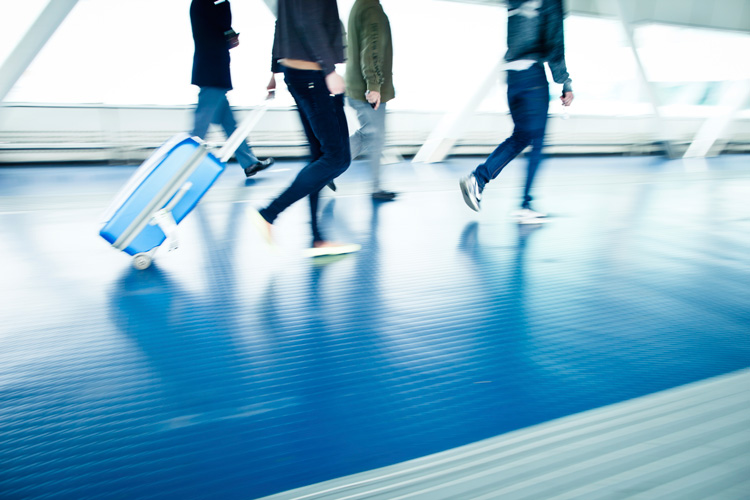Written by Cathy Swormstedt
Be a healthy passenger
Being healthy for your trip should be top of mind. Stay well hydrated, starting a few days before your trip, and drink plenty of water during the flight because airplane cabins have very low humidity. Also avoid drinking alcohol on board because it can dehydrate you and sap your energy.
Some passengers fear that an aircraft’s re-circulated air represents germ-spreading disaster, even though the air flows through high-efficiency filters that help remove germs, fungi and dust. Kim Coats, national health coordinator for American Airlines’ Association of Professional Flight Attendants, understands passengers’ concerns, but explains: “Filters are better than they once were, especially in the newer planes. And airlines are constantly working to make more improvements.”
According to studies cited in a Johns Hopkins Health Alert on this topic, you have greater exposure to possible illness if you happen to be seated within two rows of someone who is coughing or sneezing. Your best defense is good hygiene. The Alert advises: “Wash your hands before eating and try not to touch your nose, eyes or mouth during the flight.” You might also bring along sanitary wipes, useful in disinfecting your arm rests. After all, you don’t know who the prior seat occupant was, and whether he or she had a cold or the flu!
Meals and Meds
You will also want to eat in order to keep your blood sugar on track and your energy up. Bring your own snacks and healthy munchies. On flights that include a meal service, call the airline several days in advance to order a special meal, and then check again the day before your flight to make sure there has been no slip-up in the order process.
As for medications, bring any necessary prescriptions along in your purse or carry-on. Do not pack prescriptions you depend on in luggage you check through. Thousands of bags go missing each year and though 98 percent of them eventually turn up, it could be days before you and the bag containing your prescriptions are reunited.
Practice travel fitness
Wear comfortable shoes for trekking through the airport(s) and loose clothing, because once airborne, your body will likely feel the bloating effects of cabin pressure. Bring a sweater or jacket, even in summer, since the temperature in the aircraft can be quite cool.
Take any opportunity to stretch, especially on long flights, even if all you can do is walk to the restroom and back. On larger aircraft there is enough room for you to periodically do a few laps around the cabin as you cross the Atlantic, say, on your way to London. Stretching your legs and moving around helps to increase blood flow to the lower extremities so as to prevent the possible formation of blood clots. Should you notice any swelling or pain in your legs, or shortness of breath, notify the cabin crew; they are trained to help.
Travel light
Pack fewer pieces of clothing—think “mix and match.” Choose outfits that go with one pair of shoes—okay, two—then wear your comfortable shoes on the plane, and you’re done.
Check large, heavy suitcases and bring on board only one lightly packed and easy-to-manage carry-on. Well-designed bags with separate compartments make for efficient organization. You can even pack your laptop in your carry-on along with your PJs, a change of clothes and necessities such as your prescriptions and basic toiletries.
Finally, a word on jet lag: to minimize the sluggishness, avoid drinking caffeine and alcohol during your flight. Instead, drink juices and lots of water. At journey’s end, Kim Coats recommends getting out for some fresh air and exercise before you succumb to a nap. “If there’s sunshine, great!” she says. “Sunshine helps you reset your body clock.” You can also curb jet lag by going to bed at the normal local time.

